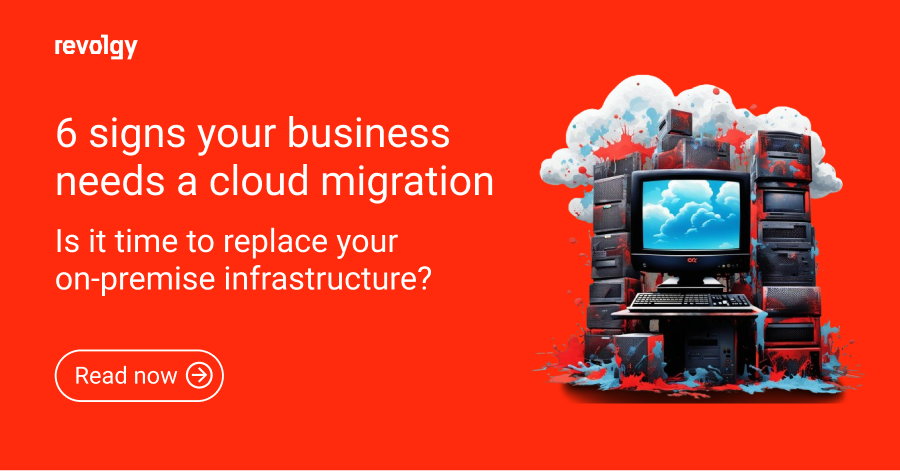Professional Services, Cloud Platform Services
From legacy to cloud: A layman’s guide to modernizing infrastructure
Maybe you’re one of those people who thinks, “If it’s not broken, don’t fix it.” But what if it’s… well, a little broken? Or maybe just not keeping up with your plans for the future?
For many organizations, legacy infrastructure is like a sturdy toolset — the one passed down from generation to generation — reliable but outdated and lacking the adaptability you need today. The world has moved on, yet these systems are anchored in the technology of the olden days. They served us well, sure, but as businesses today push to stay agile, secure, and scalable, legacy infrastructure can feel like a heavy weight chained to your ankle, holding you back as you try to move forward. This guide breaks down what modernizing infrastructure really means, giving you a simple, not-too-technical roadmap for change.
Why legacy infrastructure is a heavy weight chained to your ankle…
You might have guessed it: yesterday’s infrastructure was built for yesterday’s demands. One of the main pitfalls of legacy systems is rigidity. They’re sturdy, sure, but using them today is like relying on a landline in a smartphone world. It’ll get you so far, but not without serious limitations. Legacy systems often struggle to scale, which is becoming a greater liability as companies grow. When scaling infrastructure becomes a confusing and time-consuming task, it’s a clear sign that change is needed.
Then there’s the issue of security. Even if these systems were designed with solid defenses at the time, they simply can’t keep pace with modern security standards and the quick turnaround of new threats. Using outdated technology today can introduce risks that didn’t even exist ten years ago.
…and why moving to the cloud is your best bet
Moving to cloud infrastructure brings benefits that legacy systems simply can’t match. Resilience and adaptability take priority. Cloud infrastructure lets businesses adjust resources on demand, maintaining flexibility without disrupting everyday operations — and suddenly, you can adjust and respond to whatever you’re facing.
Modernizing simplifies infrastructure management, reducing maintenance and updates. Cloud tools provide clear oversight, making it easier for teams to work together. Financially, the cloud is flexible — you only pay for what you use, saving money on hardware costs.
Core components of modernization
When it comes to moving beyond legacy systems, the idea of cloud-native infrastructure can sound scary. But breaking it down makes it clear that the transition doesn’t have to be overwhelming. Cloud infrastructure is built to keep things running with tools that simplify monitoring, maintenance, and troubleshooting. This focus on resilience means that, even when disruptions happen, systems are ready to recover — an essential advantage for businesses where downtime isn’t an option.
Security is another cornerstone of cloud infrastructure. The biggest providers, like Google Cloud and AWS, regularly update security measures and protocols, making compliance with industry standards much less of a headache. This kind of “always-on” security allows businesses to operate without the constant worry of maintaining outdated defenses.
First steps in moving beyond legacy
Transitioning to cloud infrastructure doesn’t have to mean throwing out the old and freefalling into the new. A good first move is to take stock of what your current infrastructure does well and identify where it’s falling behind. From there, choosing the right cloud model (whether public, private, or hybrid) can help you balance security, scalability, and cost to fit your organization’s specific needs.
Read also: Picking the right cloud strategy
Instead of attempting an all-at-once switch, planning a phased migration minimizes disruptions and allows time to explore the cloud’s benefits in manageable steps. A gradual approach makes it possible to move beyond legacy systems without sacrificing the reliability they’ve provided.
Going it alone vs. going with a partner
Working with an expert partner can make the transition to cloud infrastructure easier in ways that go beyond technical expertise. Revolgy’s experience, for example, means we’ve seen the common missteps, unexpected issues, and success stories that come with a well-planned migration. Our hands-on expertise helps guide clients around potential pitfalls.
A dedicated cloud partner can also provide long-term support, take care of ongoing infrastructure management and optimization, and introduce new ways to streamline your work (for example, by implementing AI). With a support structure in place, everything from the initial setup to ongoing optimization is taken care of — a real advantage for organizations that lack extensive in-house IT resources.
Read our success stories here.
Where do we go from here?
So, maybe you’re starting to think about that decade-old infrastructure as more than just a stubborn guest who has overstayed its welcome. Maybe it’s time for something that can grow with you, adapt to your needs, and evolve without pulling you back. Legacy systems had their day, but today’s demands call for resilience, agility, and the ability to scale.
If you’re ready to explore the possibilities of modernization, Revolgy is here to make the journey smooth and rewarding. The future is in the cloud, and with the right support, it’s closer and more achievable than you think.



